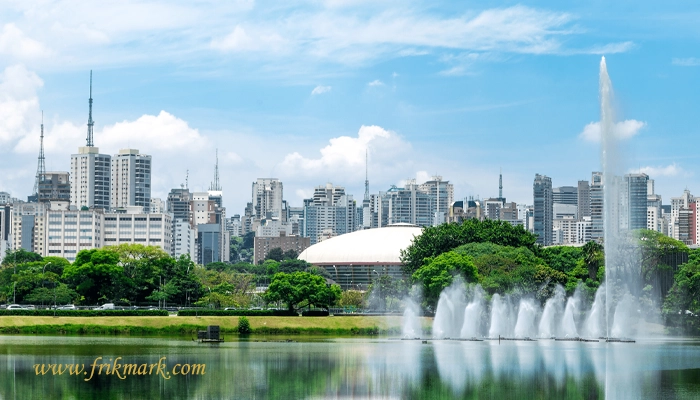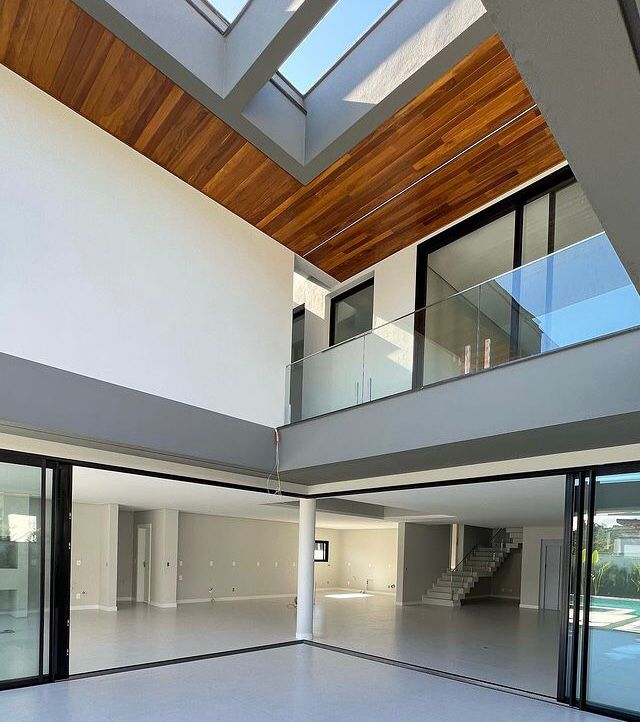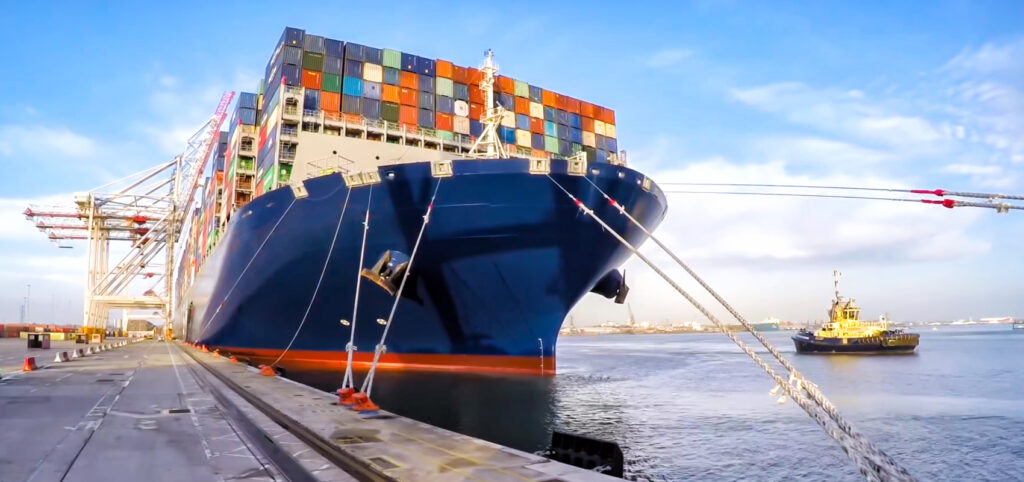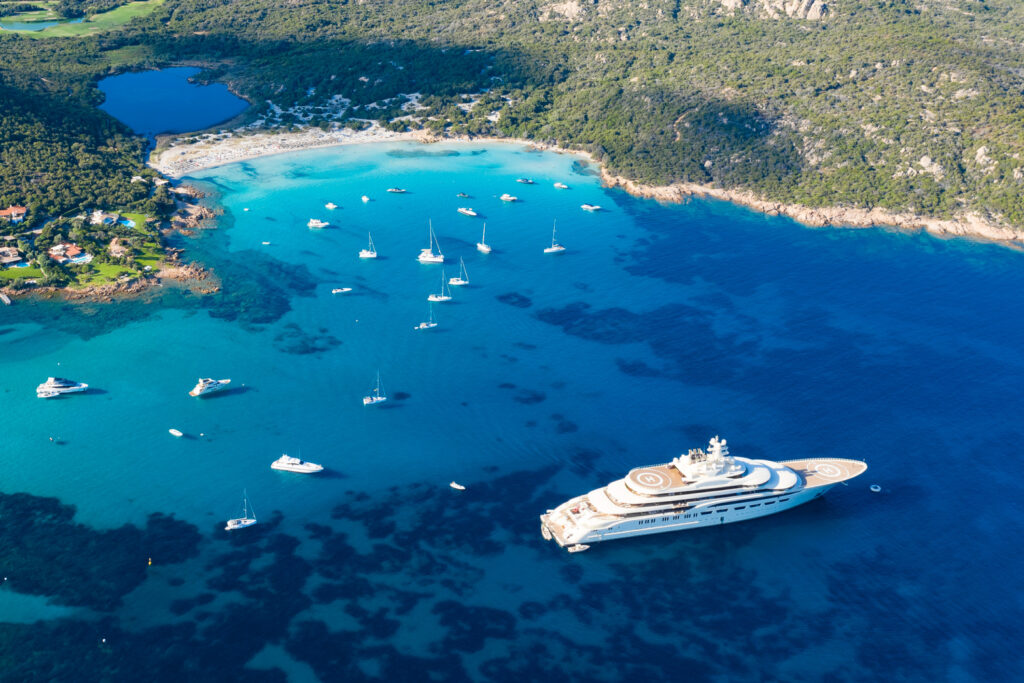São Paulo is the largest and most populous city in Brazil, and one of the most important economic, cultural, and social centers in South America. Located in southeastern Brazil, this dynamic city, with a population of over 12 million, is the beating heart of financial, industrial, and innovative activity in the country. São Paulo not only represents Brazil’s ethnic and cultural diversity, but is also a model of rapid urban growth, the complexities of modern life, and social challenges.
This article is an attempt to explore various aspects of this influential metropolis, from its geographical location and history to its economic structure, cultural diversity, tourist attractions and the challenges it faces. Understanding São Paulo’s place helps us gain a clearer picture of urban developments in the Global South and its key role in shaping the future of the region.
Life in Sao Paulo
Living in São Paulo is a vibrant and diverse experience. The city’s residents are made up of many different cultures, languages, and ethnicities, and this diversity makes daily life in the city colorful and dynamic.
In terms of urban amenities, São Paulo offers access to a wide range of high-quality health, educational and cultural services. Large shopping malls, a variety of restaurants with local and international cuisine, parks and green spaces such as Ibirapuera Park provide excellent opportunities for leisure activities. However, living in this city also brings challenges such as heavy traffic, air pollution, high housing costs and social disparities that affect the quality of life.
Despite all these challenges, São Paulo is a vibrant city that offers many job and cultural opportunities for its residents. Its entrepreneurial spirit, extensive artistic activities, and multicultural community make living in this city exciting and exciting. For those looking to experience modern city life with a high level of cultural diversity, living in São Paulo can be a great choice.
Geographical location and demographics of São Paulo
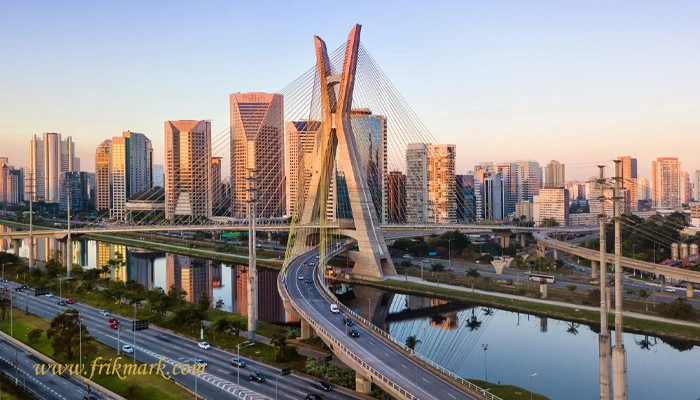
The city of São Paulo is located in the southeast of Brazil and is the capital of the state of the same name. This large metropolis is located about 760 meters above sea level on a plateau called “Planalto Paulista”. The geographical location of São Paulo, adjacent to fertile agricultural areas and relatively close to the Atlantic coast, has played a decisive role in the growth and prosperity of the city. This location has made São Paulo one of the communication, industrial and commercial hubs not only in Brazil, but throughout South America.
São Paulo has a subtropical climate . The city has hot, humid summers and often cool, dry winters. This climate, combined with its location, has attracted a large population to the city over the past decades.
In terms of population, São Paulo is the most populous city in Brazil, with a population of over 12 million in the urban area and over 20 million in the metropolitan area. The city has always been known as a destination for internal and external immigrants, and especially in the 19th and 20th centuries, large waves of immigrants from countries as diverse as Italy, Portugal, Japan, Lebanon, Germany, and Spain came to São Paulo , contributing to the formation of its cultural and economic identity.
The diverse racial, linguistic and cultural mix in São Paulo has made the city an example of a multicultural society. Today, São Paulo is not only a symbol of ethnic and cultural diversity in Brazil, but also a unique manifestation of modern coexistence and dynamism, both socially and humanly.
A brief history of the city of São Paulo
The history of São Paulo dates back to the 16th century. The city was founded on January 25, 1554, by Jesuit missionaries, including Fathers Manuel da Nóbrega and José de Anchieta. Their initial goal was to spread Christianity among the indigenous people of the region, and the first building they built was a religious school on the site of the current Pátio do Colégio. This place can be considered the starting point of the formation of São Paulo .
In the early centuries, São Paulo was a small, isolated, and largely agricultural city. However, starting in the 18th century and especially in the 19th century, the city gradually became an important center for the coffee trade. Coffee, transported from the southern state of São Paulo to the port of Santos, played a fundamental role in the economic prosperity of the region. With the development of the railway during this period, communication between coffee plantations and export ports was facilitated, and these infrastructural developments paved the way for the rapid growth of São Paulo .
In the late 19th and early 20th centuries, foreign immigrants arrived in large numbers in São Paulo , working in emerging industries, farms, and construction projects. During this period, São Paulo emerged as the industrial and manufacturing center of Brazil. These developments led to rapid population growth and expansion of the city, such that by the 20th century, São Paulo had become one of the largest urban centers in Latin America.
In the 20th century, São Paulo also became the scene of labor movements, political upheavals, and the growth of the middle class. With the emergence of high-rise buildings, industrial zones, university centers, and financial institutions, the city took on a modern and sophisticated face that is still changing and expanding.
Today, looking back, it is clear that the history of São Paulo represents a challenging and dynamic path that began with a simple religious mission and has led to a global metropolis.
Economy and industry of Sao Paulo
São Paulo is known as the economic capital of Brazil and is undoubtedly one of the largest and most powerful economic hubs in South America. The city contributes a major share to the country’s GDP and is home to hundreds of national and international companies, major banks, the stock exchange, and the headquarters of various industries.
São Paulo began as a coffee and agricultural city, but quickly became a major industrial center. In the 20th century, the city became a major center of industrial production in Brazil. Industries such as automobiles, steel, textiles, food processing, petrochemicals, and information technology have grown significantly in São Paulo . Companies such as Ford, General Motors, and Volkswagen have established large factories around the city, creating jobs and developing the city’s infrastructure.
In recent decades, São Paulo’s economy has gradually shifted from heavy industry to a service, technology, and knowledge-based economy. Today, the service sector—including banking, insurance, information technology, media, and advertising—is the largest economic sector in the metropolis. The São Paulo Stock Exchange (B3) is one of the most important financial markets in all of Latin America, playing a key role in attracting domestic and foreign capital.
Sao Paulo is also a major hub for international trade and exhibitions in the region. Exhibitions such as FISPAL in the food industry or the Bienal de São Paulo in the arts attract thousands of visitors and foreign investors to the city, creating numerous economic opportunities.
Despite all these advantages, São Paulo also faces challenges such as economic inequality, concentration of wealth, and marginalization. Wealthy areas with modern towers and large shopping malls are located next to poor and low-income areas; these contrasts are considered one of the most important economic and social issues of the city.
However, São Paulo’s economy remains the driving force of Brazil, playing a vital role in connecting the country to global markets. Its adaptability and high human capital make it a dynamic example of a developing urban economy.
Culture and society of São Paulo

São Paulo is one of the most diverse and dynamic cultural centers in Latin America. With a mix of immigrants from all over the world, indigenous traditions, and modern cultural institutions, the city has become one of the cultural capitals of Brazil. In São Paulo , culture is not just an aspect of life; it is an integral part of the city’s identity, visible in the streets, galleries, theaters, and even graffiti-covered walls.
São Paulo is home to the largest Japanese community outside of Japan, along with large populations of Italian, Lebanese, German, Portuguese, African, and more recently Asian immigrants. This cultural diversity is clearly visible in the language, food, rituals, and lifestyle of the people. Neighborhoods such as Liberdade , with its Japanese culture, or Brigadeiro, with its Italian restaurants, are examples of this multiculturalism of the city.
In the field of art, São Paulo plays a central role. Museums such as the São Paulo Museum of Art (MASP), the Pinacoteca and the Portuguese Language Museum are among the most important cultural centers not only in Brazil but also internationally. The city also hosts the famous São Paulo Biennial of Contemporary Art, which began in 1951 and is now considered one of the most prestigious art events in the world. Also read: Brazilian language
Cinema, theater, and music also have a special place in São Paulo . With dozens of active theaters, such as the Municipal Theater, and a variety of music festivals ranging from symphonic to rock and folk, the city is constantly producing artistic works. Brazilian indigenous music, such as samba and bossa nova, as well as more modern genres, are prominent in São Paulo’s urban culture.
In addition to the arts, São Paulo is one of the most important centers of higher education in Latin America. The University of São Paulo (USP) is considered one of the most prestigious universities on the continent and, along with other academic centers, has been influential in shaping the country’s scientific, literary, and political elite.
The lifestyle in São Paulo is a combination of urban pace, entrepreneurial spirit, and a desire for innovation. Along with this dynamism, the city’s residents also face numerous social challenges, such as inequality, crime, and economic pressures. Despite these problems, São Paulo’s society has managed to maintain its spirit due to its diversity, resilience, and sense of collective identity.
Tourism and attractions in the metropolis of São Paulo
Although São Paulo is often known as a commercial and industrial center, the city also has a lot to offer in terms of tourism. With its cultural diversity, world-class museums, international cuisine, modern and historic architecture, and vibrant nightlife, São Paulo is an attractive destination for both domestic and international tourists.
One of the city’s most prominent attractions is the São Paulo Museum of Art (MASP) on Paulista Avenue. With its unique architectural design and impressive collection of classical and modern artworks, including works by Rembrandt, Goya, Matisse, and Picasso, the museum is considered one of the most important art centers in South America.
Parque Ibirapuera , sometimes compared to New York’s Central Park, is one of the largest and most popular green spaces in São Paulo . With lakes, walking and cycling paths, museums and exhibition halls, the park is an ideal place to relax, exercise, and attend cultural events.
Avenida Paulista , the financial and cultural heart of the city, is not only home to banks and companies, but also to bookstores, art galleries, restaurants and trendy cafes. It becomes one of the liveliest areas of the city, especially on holidays when it is closed to pedestrians.
History buffs can visit historic neighborhoods like the Centro Histórico and the Patio do Colegio square , where São Paulo was first founded. Old churches, colonial-era buildings, and markets like Mercadão with local produce are also part of the city’s authentic cultural experience.
For those interested in cultural diversity, the Liberdade neighborhood offers a unique experience. The heart of the Japanese-Brazilian community, this area is full of Asian shops, sushi restaurants, street markets, and traditional Asian ceremonies, making a visit an unforgettable experience.
São Paulo’s nightlife is also world-renowned. From cozy cafes to live music clubs and street parties, there are a variety of entertainment options. The Vila Madalena and Itaim Bibi districts are among the city’s most popular nightlife spots.
Although São Paulo doesn’t have as many sunny beaches as Rio de Janeiro, its cultural depth, great food, international events, and diverse population make it an attractive tourist destination for those looking to truly experience modern Brazil.
Challenges and opportunities of living in the city of Sao Paulo
Despite its economic, cultural and urban grandeur, São Paulo faces numerous challenges that affect the sustainable development of this metropolis. At the same time, these same challenges can create opportunities for innovation, structural reforms and improvements in the quality of life of its residents.
One of the most important challenges in São Paulo is social and economic inequality . In this city, modern skyscrapers and wealthy areas are only a few kilometers away from poor areas (favelas). Unequal access to education, health, transportation, and security has created a huge gap between social classes. Many marginalized residents lack stable job opportunities, quality government services, and a healthy living environment.
Heavy traffic is another serious problem in Sao Paulo . With millions of cars on the city’s roads, residents spend many hours a day in congested traffic. Although the city’s metro system is extensive and relatively advanced, it does not fully meet the growing demand for public transportation. This has led to air pollution, reduced productivity, and psychological stress on citizens.
On the other hand, environmental issues such as river pollution, the decline of urban vegetation, and the high production of waste are major problems. With rapid population growth and unbalanced urban expansion, the natural ecosystems around São Paulo have been damaged. However, in recent years, the municipality has initiated projects to restore green spaces, recycle waste, and improve urban air quality.
Alongside these challenges, there are opportunities for positive transformation in São Paulo . Investments in sustainable public transport, green technologies, education, and smart urban development can improve the quality of life in Brazil . The presence of universities, research centers, and innovative companies has created a high capacity for knowledge-based development and creative solutions.
Also, the cultural and human diversity of this city in Brazil is one of the richest and least used resources for strengthening social cohesion and building bridges of understanding between different groups. The expansion of social, cultural and participatory projects can help solve some of the structural problems.
Overall, São Paulo, despite its complex challenges, is a city with great potential for progress. It is an example of the urban duality of the 21st century: while struggling with chronic problems, it also has enormous potential for growth, innovation, and a better future.
Sao Paulo team players
Sao Paulo FC is one of the most powerful and popular teams in Brazil, with a mix of experienced players and talented youngsters this season. In attack, players like Lucas Moura , who has returned to the team after shining in Europe, and Callier and Luciano are recognized as key strikers. Also, technical and creative midfielders like Oscar play an important role in creating scoring chances and controlling the game.
In defense, São Paulo has formed a solid and cohesive line with central defenders like Arboleda and Ruan, and full-backs like Cedric Soares and Wendel . Experienced goalkeepers like Leandro also provide the necessary security for the defense. The team also benefits from the presence of defensive and central midfielders like Luiz Gustavo and Marcos Antonio, who play a vital role in controlling the rhythm of the game and passing the ball. This combination allows São Paulo to compete at continental and domestic level and maintain its position as one of the best clubs in Brazil.
Also read: Customs clearance in Brazil
What league is Sao Paulo in?
São Paulo FC competes in two major Brazilian football leagues:
Campeonato Brasileiro Série A: This league is the highest level of Brazilian football and is contested by the country’s top teams. São Paulo is in this league for the 2025 season and is currently ranked 14th in the table.
Campeonato Paulista: This league is the state league of the state of São Paulo, in which teams from different states compete. São Paulo is also in this league for the 2025 season and is in the semi-finals.
The club also participates in international competitions such as the Copa Libertadores and the Copa do Brasil.
Overall, São Paulo is one of the most prestigious and popular clubs in Brazil, competing in both domestic and international leagues.
Best time to travel to Sao Paulo
The best time to visit São Paulo is usually from April to October, which is the city’s dry and temperate season. During this time, the weather is cooler and less humid, making it ideal for exploring the city and seeing its attractions. May and September are particularly pleasant, with fewer tourists than in the summer, making for a better travel experience.
During the summer season (November to March), São Paulo experiences hot and rainy weather, which may affect some tourist plans. However, this season is attractive for those interested in local celebrations and festivals, as numerous festivals are held during this period and the city takes on a more lively atmosphere.
Sao Paulo attractions
One of São Paulo’s most famous attractions is Ibirapuera Park; this large, green park provides a relaxing space in the middle of the city and is great for walking, cycling, and visiting museums and cultural spaces. The São Paulo Museum of Art (MASP) is also a popular tourist spot with its unique art collections and modern architecture.
Paulista Avenue, the city’s economic and cultural heart, is full of shops, restaurants, and entertainment venues, and is very lively and dynamic during the day and night. Also, the São Paulo Cathedral and the Municipal Market are other places of interest that showcase the city’s culture and history.
Here is a list of famous and popular places to visit in São Paulo:
- Ibirapuera Park
- Museum of Art of Sao Paulo (MASP)
- Paulista Avenue (Avenida Paulista)
- Sao Paulo Cathedral (Sao Paulo Cathedral – Catedral da Sé)
- Central Market (Municipal Market of Sao Paulo)
- Museum of Football
- Liberdade (Japanese neighborhood)
- Ateli Park (Parque da Água Branca)
- Banco Itrum Tower (Edifício Copan – famous modern architecture)
- São Paulo Botanical Garden
- Museum of the History of São Paulo (Museum of the Portuguese Language)
- Museum of Contemporary Art (MAC)
- Arts and Crafts Market (Feira de Arte e Artesanato da Praça Benedito Calixto)
- Municipal Theater of São Paulo
Famous dishes of Sao Paulo
-
Pão de Queijo
are small, round breads with a soft texture and lots of cheese, usually served as a snack or breakfast. These breads are native to Brazil and are very popular in São Paulo. -
Feijoada is
a traditional Brazilian dish made with black beans, various meats such as pork and sausage. It is usually served with rice, cabbage, and oranges and is a complete and delicious meal. -
Moqueca is
a seafood dish made with fish, shrimp, tomatoes, coconut milk, and special Brazilian spices. It is most popular in coastal areas, but you can also find good restaurants in São Paulo to eat it. -
Mortadella Sandwich
This giant and delicious sandwich, filled with mortadella ham and cheese, is one of the most popular street foods in São Paulo’s central market. -
Brazilian Churrasco is
a Brazilian barbecue dish that includes a variety of grilled meats with different flavors. It is especially popular in specialty churrasco restaurants and is a favorite among locals.
Sao Paulo Hotels
Luxury and 5-star hotels in Sao Paulo
- Four Seasons Hotel São Paulo is
an ultra-luxurious and modern hotel with unparalleled service, an outdoor pool, a professional spa, and high-quality restaurants. It is located in the Jardim district, a quiet area full of greenery. - InterContinental São Paulo is
a famous city center hotel with excellent access to Paulista Avenue, large rooms, and full facilities such as a gym and a variety of restaurants. - The Ritz-Carlton, São Paulo is
an ultra-luxury hotel with modern design, rooms with city views, and exclusive services including a luxury spa and indoor pool.
Mid-range, family-friendly hotels
- Fairfield by Marriott São Paulo
is a reasonably priced hotel with full facilities and a great location near Paulista Avenue, suitable for tourists and business travelers. - Mercure São Paulo Expo
This comfortable mid-range hotel is a great option for those looking for a good price and access to the exhibition center and shopping malls. - HH Boutique Hotel is
a small and cozy boutique hotel with beautiful design and friendly service, located in the Jardim Palero area.
Budget and boutique hotels in Sao Paulo
- Ibis São Paulo Paulista is
a budget hotel with good service and a great location near Paulista Avenue, suitable for travelers on a budget. - Terra Atlantica Hostel is
an affordable and friendly option for young people and those looking for an intimate and cheap atmosphere. - L’Hotel PortoBay São Paulo is a boutique hotel
that combines comfort and stylish design at a more affordable price than luxury hotels, located in the city center.
Popular and unique hotels in São Paulo for different experiences
- Hotel Esplanada São Paulo is
an old and well-known hotel in the heart of the city with a classic design and easy access to historical attractions. - The Transamerica Executive Jardins Hotel is
a modern hotel with full sports facilities and a swimming pool, located in the Jardim Palero area, suitable for business and leisure travelers.
Sao Paulo weather
The climate of São Paulo is generally tropical, but due to its altitude of about 700 meters above sea level, the weather is milder and more variable than in coastal cities in Brazil. Summers are hot and humid, with average temperatures between 20 and 30 °C, while winters are cooler and drier, with temperatures usually ranging between 12 and 23 °C.
Precipitation in São Paulo occurs mostly in the summer, and winters are generally drier. Temperature variations between day and night can be significant on some days, so bring warm clothing if you’re visiting in the winter. Overall, the weather in São Paulo is pleasant and suitable for tourism.
Frequently Asked Questions
Where is Sao Paulo?
São Paulo is a large and important city in Brazil. It is the capital of the state of São Paulo and is one of the largest and most populous cities in South America. It is also known as an economic, cultural, and commercial center in Brazil and the region.
Why is São Paulo known as the economic capital of Brazil?
São Paulo is known as the economic capital of Brazil because it is the main center of diverse industries, large national and international companies, and the country’s financial market; the city hosts the largest Brazilian stock exchange (B3) and has an advanced transportation infrastructure that facilitates domestic and foreign trade. Also, the presence of a skilled workforce and prestigious universities has made São Paulo a major engine of economic growth and innovation in Brazil.
Conclusion
As Brazil’s largest city and the economic heart of the country, São Paulo is a unique blend of culture, history and industrial progress. With its many attractions, rich food variety and modern infrastructure, the city is an attractive destination for tourists and investors. The mild climate and extensive opportunities in various economic, scientific and artistic fields have made São Paulo a dynamic and vibrant city where every visitor can have a different and memorable experience.
